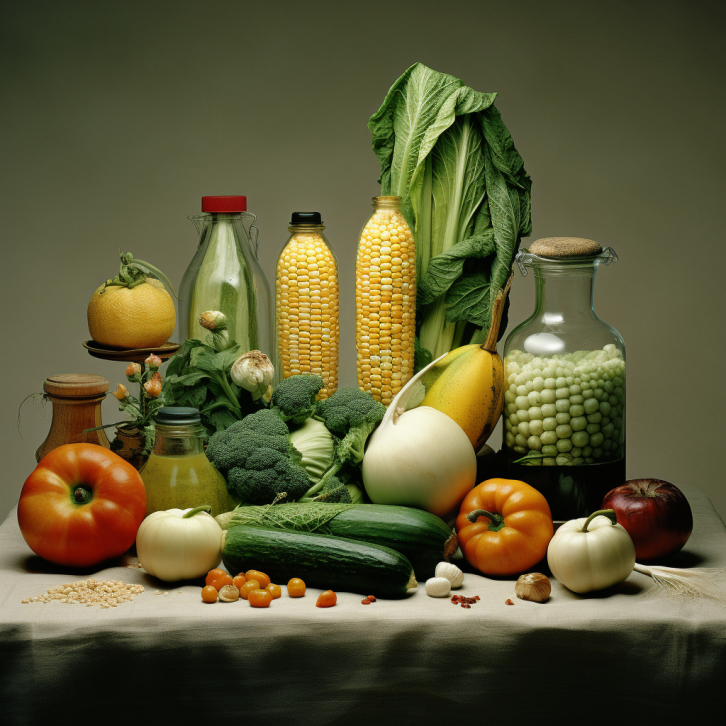Genetically modified (GM) foods have been available for decades, but many consumers still don’t fully understand what they are or their potential impacts.
Research shows knowledge gaps persist regarding GM food traits, safety, regulation, and labeling.
Experts emphasize the need for more accessible scientific communication to improve public comprehension.
Key Facts:
- GM crops were first sold commercially in the 1990s and now comprise a large proportion of common foods like corn, soybeans, and cotton.
- Surveys consistently find nearly half or more of consumers don’t know if GM foods are sold in supermarkets or if they’ve eaten them.
- Consumers tend to get information about GMOs from non-expert sources like the media and internet, rather than scientific papers.
- People with more education in biology and genetics tend to have more positive views of GMOs.
- Over 90% of Americans support mandatory GMO labeling, but current policy does not require it.
Source: Adv Nutr.
The Genetically Modified Food Revolution You May Not Know About
For decades, farmers and food companies have been using advanced genetic techniques to alter the DNA of crops.
The resulting genetically modified organisms (GMOs) are everywhere in today’s food system, making up a large proportion of common ingredients.
But research shows that many consumers remain unaware or misinformed about the prevalence and implications of this genetic modification revolution.
GMOs were first commercialized in the 1990s. The Flavr Savr tomato, engineered for longer shelf life, was approved in 1994.
Herbicide-tolerant soybeans, able to survive spraying of weed killers, followed in 1996.
Since then, adoption of GM crops has dramatically increased.
As of 2014, GM varieties comprised 94% of soybean acreage, 89% of corn, and 91% of cotton in the U.S.
Early modifications focused on herbicide and insect resistance, but new generations of GM crops aim to improve nutritional content, texture, shelf-life and more.
Widespread Use of GMOs & Limited Consumer Knowledge
Given their prevalent use, you might expect GM foods to be widely understood.
But surveys show consumer comprehension has not kept pace with adoption.
A 2004 study found that just 48% of Americans knew GM foods were sold in supermarkets, and only 31% thought they had eaten them.
In 2013, those numbers actually decreased to 43% and 26% respectively.
A majority say their personal knowledge of GMOs is low.
Other polls have found over half of consumers admit to knowing little or nothing about biotech foods.
Those who do know about GMOs often misunderstand which crops have been genetically engineered.
Surveys in Europe and Asia also reveal limited familiarity with GM foods among consumers there.
Rates tend to be higher in the U.S., but still less than 50% feel informed.
Reliance on Mass Media for GMO Information Over Scientific Sources

With low knowledge but high interest, where do consumers turn for information?
Studies find most gather GMO facts from mass media and online sources, while a minority consult science journals.
In one survey, over three-fourths used the internet to learn about GMOs.
Other top sources were television, radio, newspapers and acquaintances.
Just 13% got information from scientific papers.
But when asked which sources they trust, consumers say scientists and academic researchers are most reliable.
They have less confidence in government, industry, and surprisingly – media.
This reveals a disconnect between where people actually get their info, and where they would prefer to get it.
It also shows a need for credible experts to engage more directly with the public through mainstream channels.
Scientific Knowledge of GMO Foods Linked to More Positive Attitudes
Is all this ignorance around GMOs simply neutral, or does it impact attitudes and choices?
Research indicates knowledge and opinions are linked.
Several studies have compared views in consumers with high versus low scientific education.
People scoring higher on tests of genetics knowledge tend to see GM foods more positively.
Those with college science preparation express less concern about consuming GMOs or using them in the food supply.
In one experiment, consumers who self-rated as more informed about biotechnology bid less for GM labeled foods in an auction.
They were willing to pay 18% less on average compared to uninformed participants.
So a lack of understanding seems associated with more negative perceptions, while science literacy corresponds to more neutral or positive views.
Educating the public about the underlying science may be key to acceptance.
Most People Want GMO Labeling
Given ambivalence among many consumers, there are frequent calls for labeling of GM foods.
Surveys show over 90% of Americans support mandatory GMO labels.
In the EU, labeling has been required since 1997.
In the US, the FDA has so far declined to impose labeling, saying GM foods do not differ fundamentally from conventional versions.
They do provide voluntary guidelines for companies that wish to advertise products as non-GMO.
Critics argue consumers have a right to transparency about how their food is produced.
Advocates say labels can be misleading without better public science education.
With limited understanding, labels alone do not guarantee truly informed choice.
Only around a quarter of consumers realize that GM labeling is currently not mandated.
And among those who actively avoid GMOs, many admit to not recognizing voluntary labels like the Non-GMO project seal.
The Need for Broader Education with Genetically-Modified Foods
In summary, genetically modified foods are common, but consumer comprehension lags behind.
Surveys show low familiarity, frequent misunderstandings, and over-reliance on non-expert information sources.
Scientific literacy appears linked to more neutral attitudes toward GMOs.
Improving public knowledge through credible channels could enable consumers to better interpret GMO information, labeling, and their own dietary choices.
With GM technology advancing rapidly, educating shoppers should be a priority.
Achieving broader public understanding remains a challenge, but a necessary step.
References
- Study: Consumer perception of genetically modified organisms and sources of information
- Authors: Shahla Wunderlich & Kelsey A Gatto (2015)







